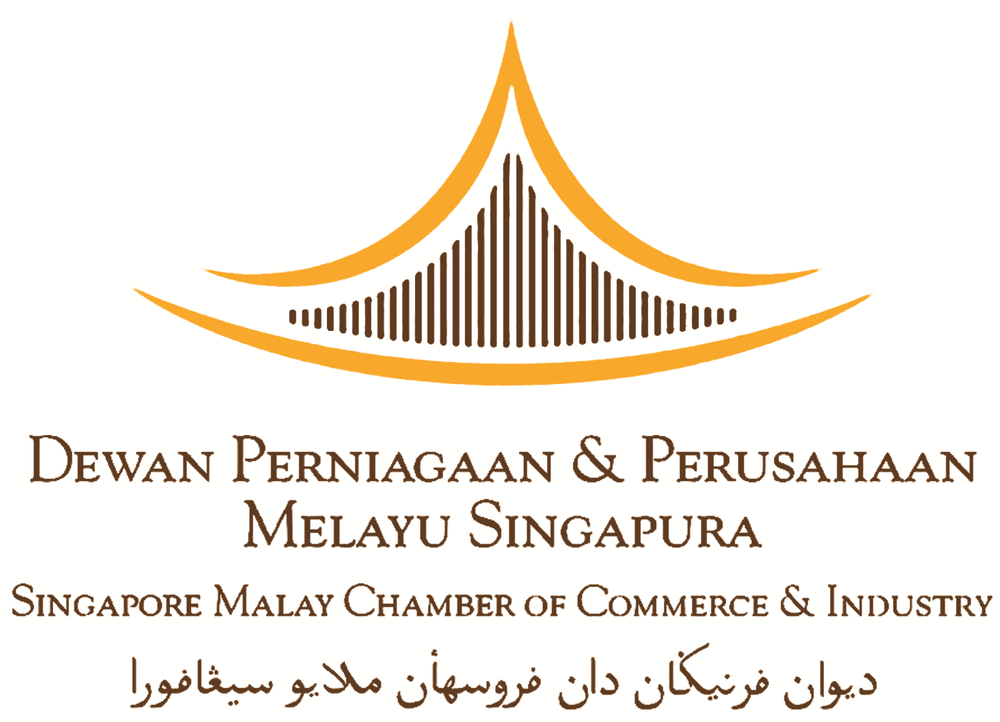- Real CBS Makeovers: 3 Case Studies of SME Owners Who Turned Bad Credit Around
- Ask SmartLend: Why Did My SME Loan Get Rejected?
- Introducing SmartLend Concierge: A Helping Hand for SME Loans
- Legal Ways to Lighten Your Company’s Tax Burden in Singapore
- A Wake-Up Call on Director Duties: The Envy Saga and Other Cautionary Tales in Singapore
- Surviving Cash Flow Crunch: How SMEs Can Use Short-Term Financing Wisely
- Unmasking Business Loan Fraud: How Syndicates and Rogue Brokers Game Singapore’s Lending System—and How AI Can Stop Them
- From Rejection to $60K Approval in 3 Days: How a Fishing Pond Business Got Funded Despite a Flawed Credit Report
- Lender Spotlight: How Poss Capital and SmartLend Partnered For Singapore SMEs
- Which Lender is Right for Your Business in 2025? Banks, Money Lenders, or Alternative Finance
Legal Ways to Lighten Your Company’s Tax Burden in Singapore

Editor’s Note: This newsletter article was originally published by our team at SmartLend, our sister platform dedicated to simplifying SME financing through our network of alternative lenders. We’re sharing it here on Smart Towkay as the insights are equally valuable for business owners looking to navigate funding options and improve financial readiness.
Introduction: Singapore’s Corporate Tax and SMEs
Singapore’s corporate income tax is a flat 17% on chargeable income. While 17% is already among the lowest rates globally, many small and medium enterprises (SMEs) end up paying even less thanks to special tax schemes. In fact, Singapore provides partial tax exemptions that significantly reduce the effective tax rate for smaller companies. For example, under the partial tax exemption scheme, 75% of the first S$10,000 of profit and 50% of the next S$190,000 are exempt from tax. This means an SME with S$200,000 in taxable profit would enjoy S$102,500 of that amount tax-free under the exemption.
Qualifying new startups get an even bigger break – they can claim 75% exemption on the first S$100,000 of profit and 50% on the next S$100,000 during each of their first three years. In short, the headline 17% rate often overstates what young companies actually pay.
Still, as any startup founder or business owner knows, every dollar saved counts. The good news is that Singapore’s tax system offers legal, IRAS-approved ways to reduce your company’s tax burden.
In this Smart-Lend newsletter edition, we’ll walk through several friendly strategies – from tax-deductible donations to R&D incentives – that can help optimize your tax bill while keeping you fully compliant. Let’s dive in!
Make Tax-Deductible Donations
Donating to charity is not only good for the community – it can shrink your tax bill too. Singapore’s tax authority (IRAS) offers 250% tax deductions for qualifying donations. In practical terms, if your company donates S$10,000 to an approved charity, you get to deduct S$25,000 from your taxable income. That’s right – 2.5 times the donation amount is deductible. These must be cash or in-kind donations to approved Institutions of a Public Character (IPCs) or the Singapore Government, including the Community Chest.
Not all contributions count. The donation must be outright with no material benefit in return (small tokens or acknowledgements are okay). For example, giving money to a local charity or donating equipment to a registered IPC would qualify. But sponsorships or payments where your company receives publicity, services, or advertising in return may be treated differently. Always ensure the organization is an IPC – you can check the list of approved IPCs on the government charity portal.
Once you donate and provide your company’s details to the IPC, the donation and 250% deduction will be automatically reflected in your tax assessment. You don’t even need to submit donation receipts to IRAS. Just make sure the IPC has your company’s tax reference number (e.g., UEN) so the donation is recorded.
If your donation deduction is larger than your income for the year (i.e., it creates a loss), the excess deduction can be carried forward up to 5 years to offset future profits. (Tip: Donation deductions can’t be transferred to other companies under group relief and will be used only after other tax losses are utilized.)
Overall, giving back to society comes with generous tax perks in Singapore. Many SMEs use this as a strategy to support causes they care about while enjoying a lower tax payable. Just be sure to donate genuinely – fake donations or trying to game this system will land you in trouble.
SmartLend is proud to partner with Cycling Without Age Singapore (CWAS).
What is Cycling Without Age? It’s a Singapore charity tackling senior loneliness by connecting elders to community and purpose through its flagship Active Generations programme—think communal dining, art-reminiscence workshops, and nostalgic trishaw rides that help seniors build friendships and relive fond memories. CWAS also upskills seniors to volunteer as trishaw pilots, safety marshals, docents, or even bicycle mechanics—turning beneficiaries into contributors.
Give Back, Get Tax Relief — Support Cycling Without Age Singapore!
Every dollar your company donates helps bring joy, dignity, and purpose to seniors who struggle with loneliness.
CWAS’s Active Generations programme empowers seniors through community dining, nostalgic trishaw rides, and art workshops — helping them reconnect and contribute back to society.
All donations are IRAS-approved and 250% tax-deductible.
Donate or Partner Today: www.cyclingwithoutage.sg
Contact Aaron at aaron@cyclingwithoutage.sg to make a corporate donation or learn how your company can support this cause.
FYI: Expanding Active Generations into a new neighbourhood costs about S$120,000/year and reaches ~900 seniors—a tangible target for corporate giving.
Claim Capital Allowances on Business Assets
Another perfectly legal way to reduce taxable profits is by claiming capital allowances on your business assets. In accounting, you might depreciate assets like computers, equipment, or machinery over a few years – but that book depreciation isn’t deductible for tax. Instead, IRAS lets you claim capital allowances (CA), which are essentially tax depreciation deductions for the wear and tear of qualifying fixed assets.
This encourages businesses to invest in themselves by buying productive assets since you can write off those costs against your taxable income.
Say you bought an office computer for S$3,000. Rather than bearing the full cost without tax relief, you can claim capital allowance on that S$3,000. IRAS provides several options: you may write off the asset in one year, over three years, or over its specified working life. Many SMEs opt for the fastest write-off to get immediate tax savings.
Low-value assets up to S$5,000 each can be fully written off in one year, capped at a total claim of S$30,000 per year. This means if you purchase a handful of laptops, printers, or other equipment (each under S$5,000), you could deduct 100% of those costs in the current year’s tax return – a great boost to cash flow. Larger assets can be written off over three years (roughly 33% per year) or even two years for assets acquired in certain Budget incentive years as a special expensing option.
Most tangible assets used in the business qualify as “plant & machinery” for capital allowances – from factory machines and vehicles to office furniture, computers, and even carpets and fixtures. Notable exceptions are land and buildings (which don’t qualify as plant) and non-business assets (e.g., a private car for personal use is not claimable).
Even renovations have a separate deduction scheme (Renovation & Refurbishment allowance) capped at S$300,000 over 3 years – though that’s a topic for another day.
Capital allowances reduce your chargeable income (profit subject to tax). By maximizing these claims, you defer or eliminate tax on the portion of profit used to buy needed assets. For example, if your company had S$100,000 profit and you bought a S$30,000 machine eligible for full CA in one year, your taxable profit drops to S$70,000 – saving you about S$5,100 in tax.
Keep proper documentation (invoices, etc.) for assets in case IRAS asks. And remember, if an asset is partly used for non-business purposes, only the business-use portion of cost is deductible.
In short, don’t forget to claim your capital allowances. It’s a bread-and-butter tax move for SMEs – reinvest in your business and reap a lower tax bill.
Tap R&D Tax Incentives
If your company is innovating or developing new products or processes, Singapore’s R&D incentives can be a game changer. The government strongly encourages businesses to undertake research and development, and one way they do so is via super-sized tax deductions for R&D expenses.
Not every tinkering project qualifies. IRAS defines R&D activities as those that are novel, experimental, and aimed at new discoveries or advancements in technology or knowledge. It could be developing a new software prototype, formulating a new product, or improving a manufacturing process – as long as there’s technical uncertainty and you’re doing a systematic investigative process to create something new. Routine upgrades or market research don’t count. The R&D should ideally be done in Singapore to qualify for the enhanced deduction.
Typical R&D costs that can be claimed include salaries of R&D personnel, costs of consumables and materials used in R&D, fees paid to R&D service providers, and even depreciation of equipment used for R&D. There’s also an Enterprise Innovation Scheme that may allow portions of the excess R&D deductions to be converted into cash payouts – the key point is, R&D is richly rewarded.
To claim the R&D deduction, you’ll need to fill up the IRAS R&D claim form (Section 14DA form) when filing your tax return, detailing the projects and costs. While you don’t submit all proof upfront, keep thorough documentation of your R&D work and expenses.
If all is in order, the tax savings are substantial. For example, if you spent S$50,000 on developing a new app, with a 250% deduction, it’s as if you got to deduct S$125,000, saving about S$21,000 in tax.
For innovative startups, these incentives are a big help – effectively reducing the cost of innovation. If you’re creating something new, take advantage of the R&D tax perks that are fully IRAS-approved and encouraged by the government.
Encourage Volunteerism via BIPS (Business and IPC Partnership Scheme)
How about saving on taxes while doing good? That’s the idea behind the Business and IPC Partnership Scheme (BIPS), recently renamed the Corporate Volunteer Scheme (CVS). Under this scheme, businesses that send their employees to volunteer at approved charities (IPCs) can claim a 250% tax deduction on the associated costs – a super-charged tax relief for corporate volunteering.
Say you pay your staff for a volunteer day or second them to an IPC project – the wages and related expenses for that activity are deductible at 2.5 times their value. If you paid S$1,000 of salary for an employee to spend time on an IPC-approved volunteer program, your company can deduct S$2,500 from taxable income under BIPS.
This applies to qualifying volunteering expenditure incurred from 1 July 2016 through 31 December 2026.
Qualifying activities are quite flexible – employees can volunteer or provide services directly to an IPC, or even be seconded to the IPC for a period. It even covers volunteering done virtually or outside the IPC’s premises (for instance, online tutoring of youth, or helping in community projects off-site).
All businesses can qualify, but note that owners or partners themselves don’t count as “employees” for this scheme. It’s meant for sending your staff, not yourself, to volunteer.
Each business can claim up to S$100,000 of qualifying expenses per IPC per year. That’s effectively up to S$250,000 deduction per IPC if you max it out – which is generous.
For SMEs, BIPS/CVS is a win-win. You encourage employee engagement and give back to the community while enjoying tax savings on the time and money spent. It’s also a nice way to build company culture (volunteering as a team) without sacrificing the bottom line. Just ensure the volunteering is genuine and properly documented (who went, when, doing what), and you’ll have no trouble claiming this IRAS-approved tax break.
Utilize Losses and Group Relief
Business has its ups and downs – some years you profit, some years you make a loss, especially in a startup’s early days. Singapore’s tax system recognizes this and allows you to leverage losses to save on future taxes.
If your company incurs a loss or has excess deductions in a year, those unutilised losses can be carried forward indefinitely to offset profits in future years (subject to certain conditions). In other words, a bad year can help lower the tax on your next good year.
This carry-forward applies not just to trade losses, but also unused capital allowances (tax depreciation) from that year. The only catch is you must pass the shareholding test – the company’s ownership must remain substantially (≥50%) the same from the loss-making year to the profit year you want to offset.
In addition to carry-forward, Singapore also has a Group Relief system for companies in the same corporate group. If you have multiple related companies (with at least 75% ownership link between them), you can transfer a current year’s unutilised losses, capital allowances, or donations from one company to another profitable company in the group.
For example, if your subsidiary A has a loss of S$100,000 this year and subsidiary B has a profit of S$200,000, A can transfer that S$100,000 loss to B. B’s taxable profit would then reduce to S$100,000, cutting its tax by using A’s loss.
Lastly, Singapore also has a Loss Carry-Back provision – you can carry current year losses backward one year to get a refund of last year’s taxes (capped at S$100,000 of losses).
Myth-Busters: Tax “Tricks” to Avoid
We’ve discussed the right way to lower taxes – now let’s address some aggressive strategies you might hear about that are definitely not okay. In Singapore, IRAS has robust enforcement and many companies have learned the hard way that if something sounds too good to be true, it probably is.
1. Inventing Phantom Expenses or Employees
Trying to claim deductions for costs that never actually happened is a straight road to tax evasion charges. Some examples include creating fake supplier invoices or listing ghost employees on your payroll to claim their “salaries” as expenses.
Others have been caught claiming personal luxury expenses (handbags, jewelry, family vacations) as company costs. The courts imposed heavy penalties and jail time. The lesson: Don’t pad your tax deductions with non-business or made-up expenses. IRAS has auditing powers, and penalties can go up to four times the evaded tax, plus fines and jail.
2. “Creative” Donations or Kickbacks
Genuine donations to IPCs get 250% deduction – but sham donations are illegal. For instance, “donating” and secretly receiving a refund or benefit in return, or funneling money through fake arrangements, nullifies your deduction and can lead to fraud charges. All IPC donations are logged, and IRAS can cross-check, so there’s no way to fake this safely.
3. Offshoring Profits Illegitimately
Some companies try to shift profits overseas to zero-tax havens through artificial means (e.g., shell companies). IRAS actively enforces against such tax avoidance arrangements that lack economic substance. Unless there’s a genuine commercial reason and transactions follow arm’s-length principles, these moves can trigger audits and penalties.
It’s a myth that you can “just incorporate offshore and pay no tax” – not if profits are essentially generated in Singapore.
4. Other Fraudulent Schemes
False GST refund claims, under-the-table cash sales, or fictitious director fees are all offenses. Singapore treats tax evasion as a serious crime. The safer path is to take advantage of the legal incentives we’ve covered and avoid shady shortcuts.
Key Takeaways for Optimizing Tax (Legitimately)
We’ve covered a lot, so here are actionable tips for SME owners looking to be tax-savvy and compliant:
- Know Your Reliefs & Deductions: Understand major tax reliefs – from partial tax exemption to donations, R&D, capital allowances, and BIPS. Plan year-end actions (e.g., charitable donations or new equipment) for immediate tax benefits.
- Document Everything: Maintain proper accounts and receipts for expenses and deductions for at least five years. It helps substantiate your claims.
- Leverage Losses Wisely: Carry forward or use group relief for losses. Many startups forget to use accumulated losses once profitable – don’t leave money on the table.
- Stay Within the Lines: Optimize, but don’t evade. Using legitimate incentives is smart; falsifying claims is criminal.
- Keep Up with Tax Changes: The government regularly introduces new schemes and temporary rebates. Staying updated ensures you don’t miss valuable opportunities.
At the end of the day, paying less tax legally is about being informed and proactive. Singapore’s tax regime rewards innovation, corporate giving, and business investment. By aligning your company’s activities with these incentives, you reduce your tax burden while improving your business.
Taxes aren’t a dreaded cost but a strategic area to manage wisely. A tax-aware SME can channel savings into growth – all while staying compliant. Plan ahead, use your reliefs, and you’ll find Singapore a truly startup-friendly tax environment.
Happy tax planning, and may your business thrive with the extra cash saved!
If you’d like the latest tips, case studies, and SME financing insights delivered straight to your mailbox—join our newsletter here.
-------------------------------------------------------------------------------------------------------
Read also: A Wake-Up Call on Director Duties: The Envy Saga and Other Cautionary Tales in Singapore
Read also: Surviving Cash Flow Crunch: How SMEs Can Use Short-Term Financing Wisely
Read also: Unmasking Business Loan Fraud: How Syndicates and Rogue Brokers Game Singapore’s Lending System—and How AI Can Stop Them
Read also: From Rejection to $60K Approval in 3 Days: How a Fishing Pond Business Got Funded Despite a Flawed Credit Report
















